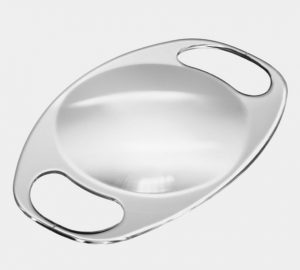Click here if you are interested in applying for this study. Assil Gaur Eye Institute is continuing to enroll patients in an investigational clinical study involving the implantation of the ARTISAN® Aphakia intraocular lens (IOL) for the correction of aphakia in adults. Since 1949 when Harold Ridley first introduced intraocular lenses as replacements for the natural lens of the eye advancements in IOL technology have continued to be made for the correction of aphakia.

The ARTISAN® IOL is for those patients who have a visually significant cataract, are aphakic or pseudophakic, and have compromised ocular anatomy that prohibits implantation of a standard posterior chamber IOL.
Typically, an IOL is placed in the capsular bag of the eye, located behind the iris. In patients with prior ocular trauma or systemic conditions (like Marfan’s syndrome) the zonules that hold this capsular bag in place are damaged and an IOL cannot be placed behind the iris.
The design of the ARTISAN lens is unique since it can be attached in front of the iris and does not require an intact or structurally sound capsular bag. While most patients will not qualify for this study as they will not need this specially designed lens, the Assil Gaur Eye Institute is fortunate to be one of just two study sites in California allowed to provide this as a potential solution for those patients who meet the study criteria.
Ages Eligible for Study: 22 Years and older (Adult, Older Adult)
Sexes Eligible for Study: All
Accepts Healthy Volunteers: Yes
Study Inclusion Criteria
- Patients 22 years of age and over at baseline visit of either sex and of any race where the natural lens has been removed or will be removed and a posterior chamber IOL is not indicated.
- The patient must agree to comply with the visit schedule and other requirements of the study
Study Exclusion Criteria
- Patients that are not able to meet the extensive postoperative evaluation requirements
- Mentally retarded patients
- When the patient has no useful vision or vision potential in the fellow eye
- History of corneal disease (e.g., herpes simplex, herpes zoster keratitis, etc.), corneal dystrophy, degeneration, opacities, or abnormalities that may affect vision.
- Abnormality of the iris or ocular structure which would preclude fixation, such as aniridia, hemiiridectomy, severe iris atrophy, rubeosis iridis, or other compromising iris pathology
- Patients with uncontrolled glaucoma
- High preoperative intraocular pressure, >25 mmHg
- Chronic or recurrent uveitis or history of the same
- Preexisting macular pathology that may complicate the ability to assess the benefit or lack of benefit obtained by the lens
- Patients with a retinal detachment or a family history of retinal detachment
- A retinal disease that may limit the visual potential of the eye such as retinopathy of prematurity or Stargardt’s retinopathy Optic nerve disease that may limit the visual potential of the eye
- Diabetes mellitus
- Pregnant, lactating, or plans to become pregnant during the course of this study
Details of this clinical study including all study criteria can be found at the National Institutes of Health (NIH) website. Click here if you are interested in applying for this study.
- Why is My Iris Inflamed? When to See a Doctor for Iritis - 12/01/2023
- How Your Vision Changes in Your 40s and 50s - 10/17/2023
- Winter Dry Eye Care Tips - 11/02/2021













